- What is Cell Ag?
- Acellular Products
- Cellular Products
- The Benefits
What is Cellular Agriculture?
Cellular agriculture refers to cell-based technologies that produce agricultural products traditionally sourced from whole organisms.
Coined by the New Harvest community in 2015, the term Cellular Agriculture (or “cell ag” as we like to call it) describes the use of biotechnologies, such as tissue engineering, molecular biology, and synthetic biology, to produce agricultural products without requiring the entire host organism – just the cells!
Much of the current industry is focused on animal-based food products such as meat, milk, and eggs, but other products such as leather, chocolate, or fragrances are also possible.
This term encompasses a few different technologies, which can be broken down into products made by cells (acellular products) or products made of cells (cellular products).
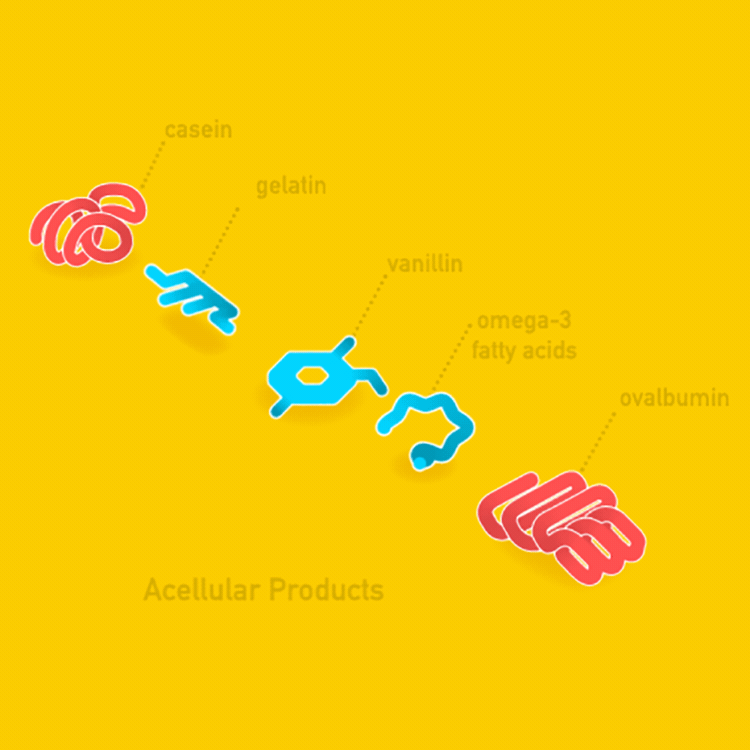

Agricultural products can be classified as acellular (without cells) or cellular (containing cells).
How to Make Acellular Products with Cellular Agriculture
Cellular agriculture can be used to produce molecules, such as proteins and fats, that would otherwise be sourced from conventional agriculture. These could be animal products like milk and egg, or plant-based products like vanillin and fragrances. These are called “acellular” products because the cells used to produce them are not part of the final product – just the molecule of interest.
One of the methods to obtain acellular products uses a microbial cell, like yeast or bacteria, as a “manufacturing facility”. This process is often referred to as “precision fermentation” because microbial cell growth (historically referred to as “fermentation”) is being used to produce a specific product.
The genetic material for the target molecule is inserted into the microbe, providing the instructions to tell the cell how to make the product.

You can look up the gene of interest online and insert it into a microbe. The microbe will now be able to make the protein you were looking for.
Taking milk as an example, the gene carrying the blueprints for cow casein, a milk protein, is inserted into a microbe. Since all cells read the same genetic code, the microbe, now carrying the gene for cow casein, makes casein.
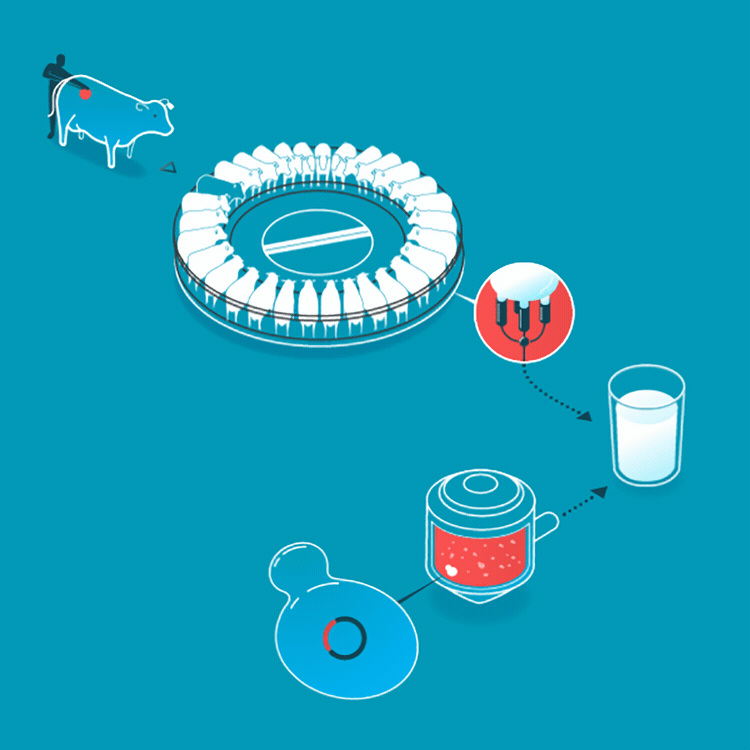
Milk is usually made by mother cows kept in a lactating state in an industrial setting. Instead, cellular agriculture could produce milk by brewing it, using a culture that consumes simple sugars to make the ingredients found in milk.
Another way we can also obtain milk without animals is by growing mammary cells, the cells responsible for lactation. Using tissue engineering and biomanufacturing techniques, we can grow mammary cells that will secrete milk components.
We have made acellular animal products in cell cultures before.
Animal insulin could be considered the first cellular agriculture product. Initially, insulin was collected from the ground-up pancreas of pigs or cattle. But in 1978, Arthur Riggs, Keiichi Itakura, and Herbert Boyer inserted the gene for human insulin into a bacteria, producing human insulin from cell cultures. Today, the vast majority of insulin is made by this technique.
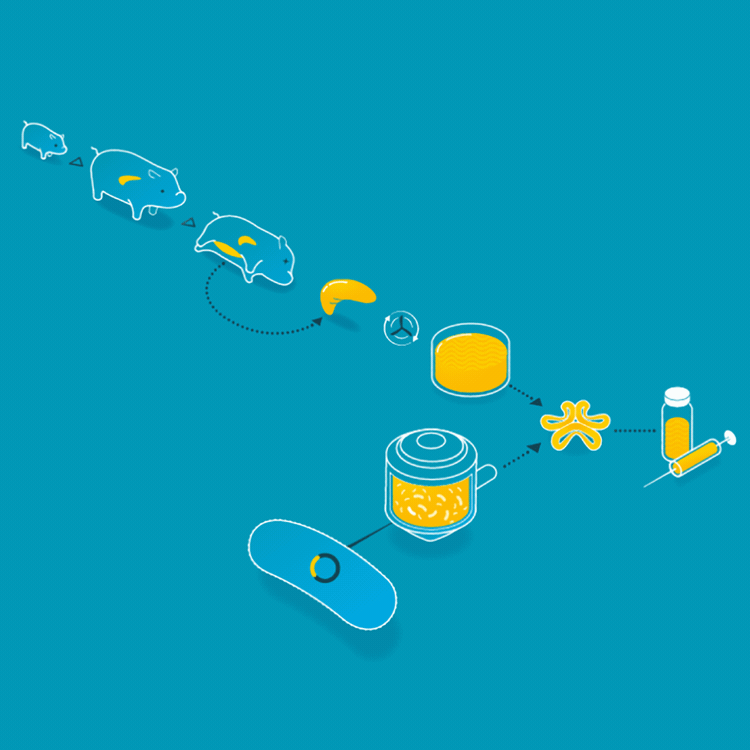
For the first 60 years of its use as a treatment for diabetes, insulin was collected from the pancreas of pigs and cattle. Today, it is made by microbes that produce the human form of insulin.
We use this technology in food already, too. Rennet is a mixture of enzymes that turns milk into curds and whey for cheese production. Traditionally, rennet is extracted from the inner lining of the fourth stomach of calves. On March 24, 1990, the FDA approved a bacteria that had been genetically engineered to produce rennet, making it the first genetically engineered product for food. Today, the majority of cheesemaking uses rennet enzymes from genetically engineered bacteria, fungi, or yeasts. Rennet harvested from cell cultures is purer, more consistent, and less expensive than animal-derived rennet.
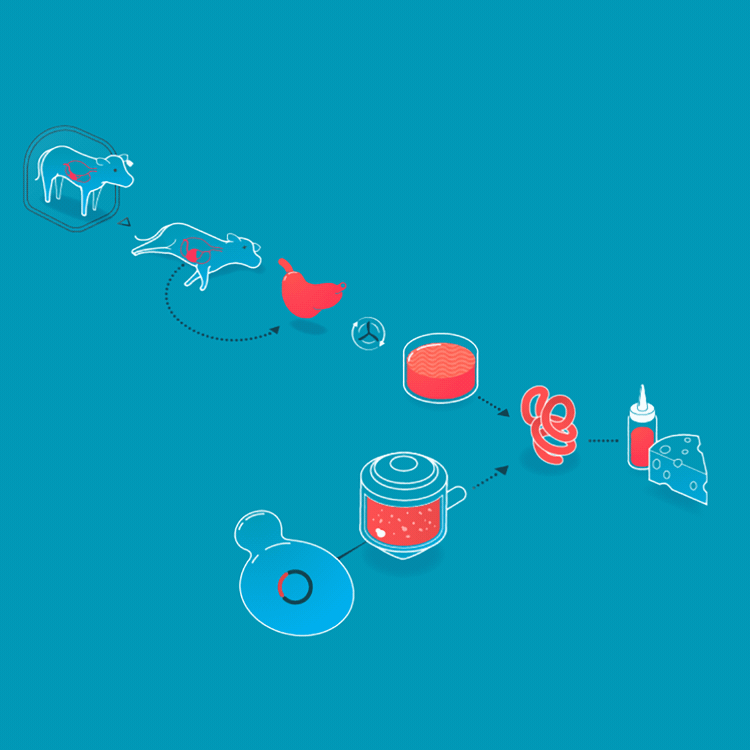
Rennet originally was collected from the fourth stomach of young calves. Today, it is made by microbes that produce rennet enzymes.
These examples go beyond animal-sourced compounds and apply to plant compounds too. All of this is possible because, as said above, all cells use the same genetic code.
A Swiss company, Evolva, maks vanillin (the primary component of vanilla flavor) from yeast. The vast majority of vanillin is produced from petrochemicals or chemically derived from lignin (a constituent of most plant cell walls). The small percentage of vanillin sourced from vanilla beans is harvested in tropical forests from the vanilla orchid. Cellular agriculture produced vanillin would avoid rainforest farming and chemical synthesis of vanilla.
How to Make Cellular Products with Cellular Agriculture
One of the best examples of cellular products is cultured meat and seafood (also known by other names such as cultivated, cell-cultured, or cell-based meat). This process uses tissue engineering and biomanufacturing techniques to produce meat through cell culture rather than animal husbandry. In the case of cultured meat, the cells are the main component of the final product.
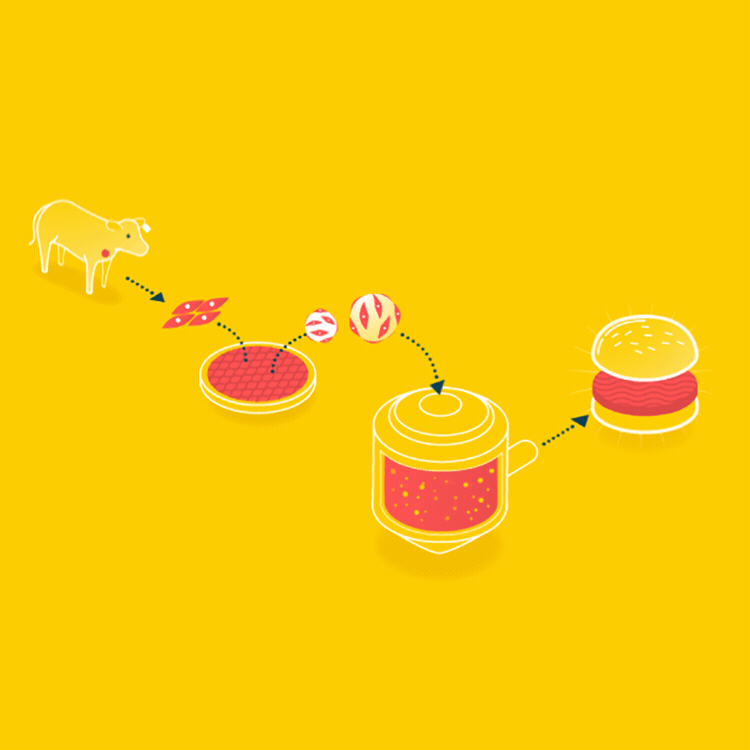
Cells from a particular species and tissue type are sourced from an animal and assembled on a scaffold (a material to grow on) with media (food for the cells to feed on while they grow) in a bioreactor (an environment that promotes growth).
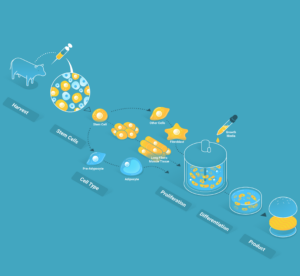
The science behind tissue engineering emerged in the medical field – growing tissue for an organ transplant – but this technology has very different considerations when applied to food. For example, tissues for meat or leather do not need to work as an organ in someone’s body. Instead, meat needs to have a particular nutritional value, mouthfeel, or taste. Leather needs to have a certain strength, texture, or softness. All cellular agriculture products need to be made affordably and in much larger quantities than is needed for medical treatments.
Why Cellular Agriculture?
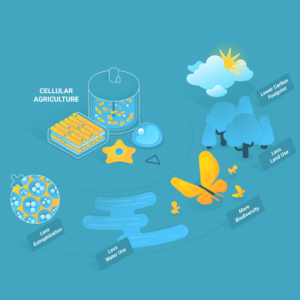
Cellular Agriculture has the potential to reduce the impacts of our agricultural systems, although more research and policy are needed to ensure these positive impacts are realized.
Cellular agriculture offers new production methods for everyday products and a means of diversifying our agricultural system. Diversification is critical as we enter a climate-changed world where the rules of farming are changing. It is part of de-risking agriculture as we know to provide for a growing global population.
Cellular agriculture products have the potential for fewer environmental impacts, a safer product, and a more consistent supply compared to their conventional counterparts. This is because the product is being produced under controlled conditions.
Another exciting aspect of cellular agriculture is the ability to design and tune what you are making. For instance, you could make meat with fewer saturated fats and more unsaturated fats, or you could make leather of different thicknesses. You could make milk without lactose, or eggs without cholesterol.
Despite the potential benefits and opportunities presented by cellular agriculture, it remains an underfunded field that requires more collaboration and open research.
Have more questions about cellular agriculture? Ask us!

